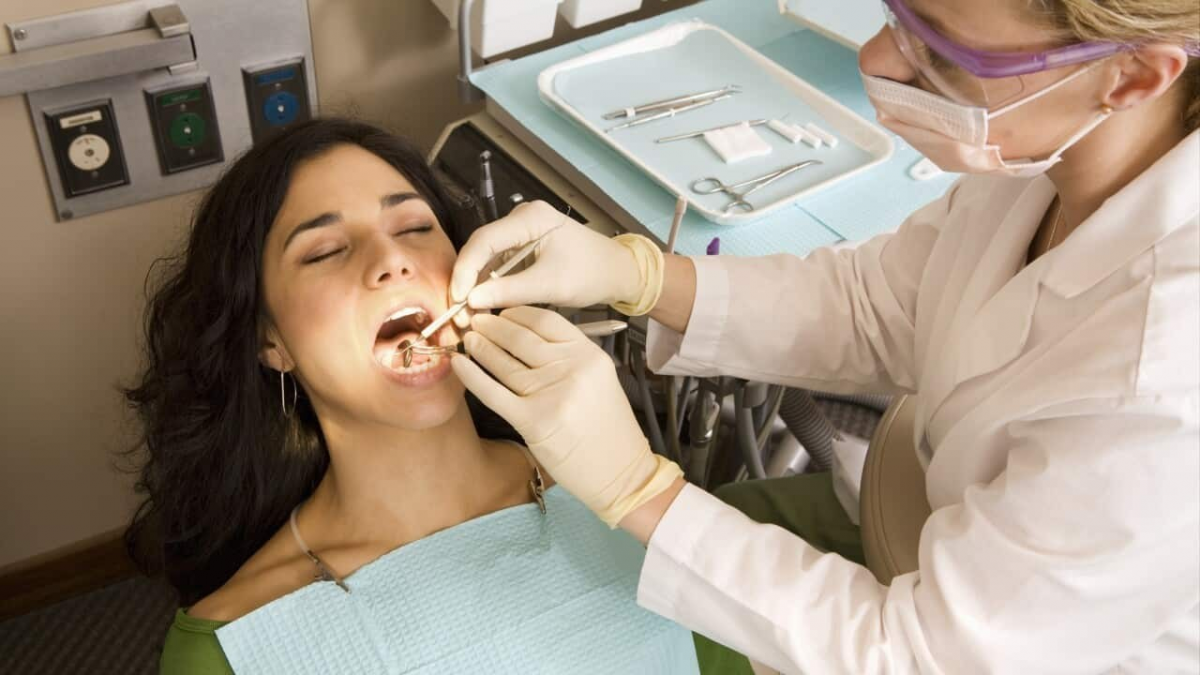Advertisement
Pulp necrosis refers to the death of the dental pulp, which is the soft tissue inside the tooth containing nerves, blood vessels, and connective tissue. When the pulp becomes necrotic, it can no longer perform its normal functions of nourishing the tooth, sensing stimuli, and defending against infection. This condition can have significant implications for the health of the tooth and the overall oral cavity.

The causes of pulp necrosis are numerous. One of the primary causes is dental trauma. A severe blow to the tooth, such as from a sports injury or a fall, can damage the blood vessels that supply the pulp. Without an adequate blood supply, the pulp begins to die. For example, a soccer player who gets hit in the mouth with a ball may experience immediate pain, and over time, if the blood vessels are severely damaged, the pulp can become necrotic.
Deep dental caries (cavities) are also a common cause. When decay progresses deep into the tooth, it can reach the pulp. Bacteria from the decay can then infect the pulp, leading to inflammation. If the infection is not treated promptly, the pulp can become necrotic. Poor oral hygiene, which allows plaque and tartar to build up, increases the risk of dental caries and subsequent pulp necrosis.
Repeated dental procedures can also contribute to pulp necrosis. For instance, if a tooth has undergone multiple fillings or root canal treatments, the pulp may be damaged during these procedures. Each time a dental instrument enters the tooth, there is a risk of traumatizing the pulp. In addition, certain systemic diseases can affect the blood supply to the teeth, making the pulp more vulnerable to necrosis. Conditions like diabetes can lead to poor blood circulation, which can impact the health of the dental pulp.
The symptoms of pulp necrosis can vary. In some cases, there may be no symptoms initially. However, as the condition progresses, a dull, throbbing pain may develop. The pain may be intermittent at first but can become more constant. The tooth may also become sensitive to temperature changes, especially hot and cold stimuli. In some cases, there may be a discoloration of the tooth. The affected tooth may appear darker or grayish compared to the surrounding teeth. This is because the dead pulp can release pigments that stain the tooth structure.
If the pulp necrosis leads to an infection spreading to the surrounding tissues, there may be swelling in the gums, face, or neck. Lymph nodes in the area may also become swollen and tender. In severe cases, the infection can cause a fever and general malaise.

Diagnosing pulp necrosis typically involves a comprehensive dental examination. The dentist will start by asking about the patient's symptoms, including the nature and duration of any pain, sensitivity, or discoloration. A visual inspection of the tooth will be performed to check for discoloration and any signs of decay or trauma.
The dentist will also use a dental probe to check for any exposed pulp or signs of infection. A percussion test may be done, where the dentist taps on the tooth gently to see if it elicits pain. This can help determine if the root and surrounding tissues are affected. X - rays are an essential diagnostic tool. They can show the condition of the pulp chamber, the root canals, and any signs of infection or bone loss around the tooth.
Treatment for pulp necrosis usually involves root canal treatment. During this procedure, the dentist will remove the necrotic pulp from the tooth. The root canals are then cleaned, disinfected, and filled to prevent further infection. In some cases, if the tooth is severely damaged or the infection has spread extensively, extraction may be necessary.
After root canal treatment, a crown is often placed on the tooth to protect it and restore its strength. This is especially important as the tooth becomes more brittle after the pulp is removed.
Prevention of pulp necrosis mainly focuses on maintaining good oral hygiene. Brushing teeth at least twice a day with fluoride toothpaste, flossing daily, and using an antiseptic mouthwash can help prevent dental caries. Wearing a mouthguard during sports activities can protect the teeth from trauma. Regular dental check - ups are also crucial. Dentists can detect early signs of dental problems, such as decay or trauma, and take appropriate measures to prevent pulp necrosis.
In conclusion, pulp necrosis is a serious dental condition that can cause pain and potentially lead to tooth loss if not treated properly. By understanding its causes, recognizing the symptoms, and seeking timely dental care, individuals can effectively manage and potentially prevent pulp necrosis.
Advertisement